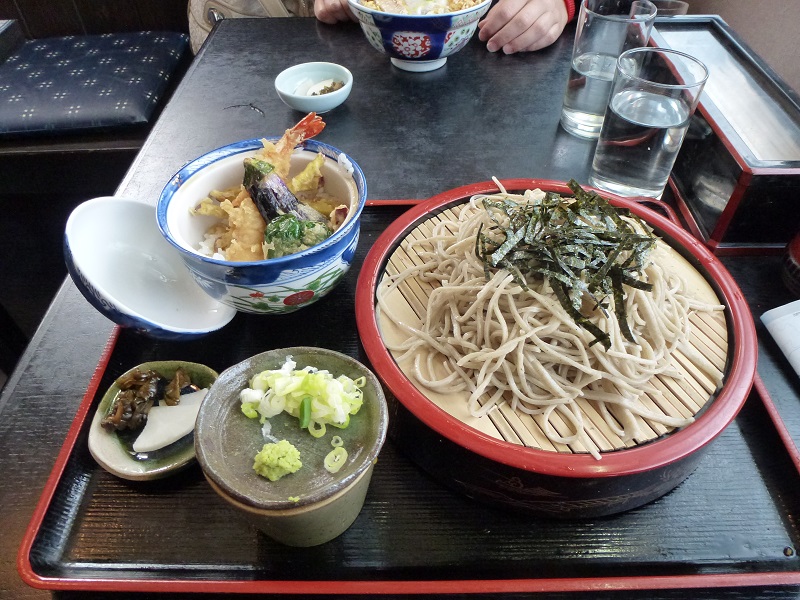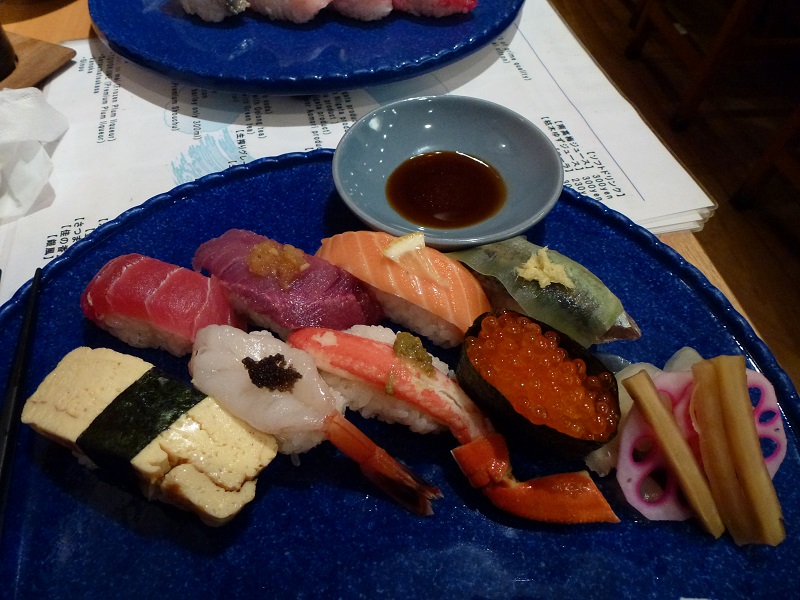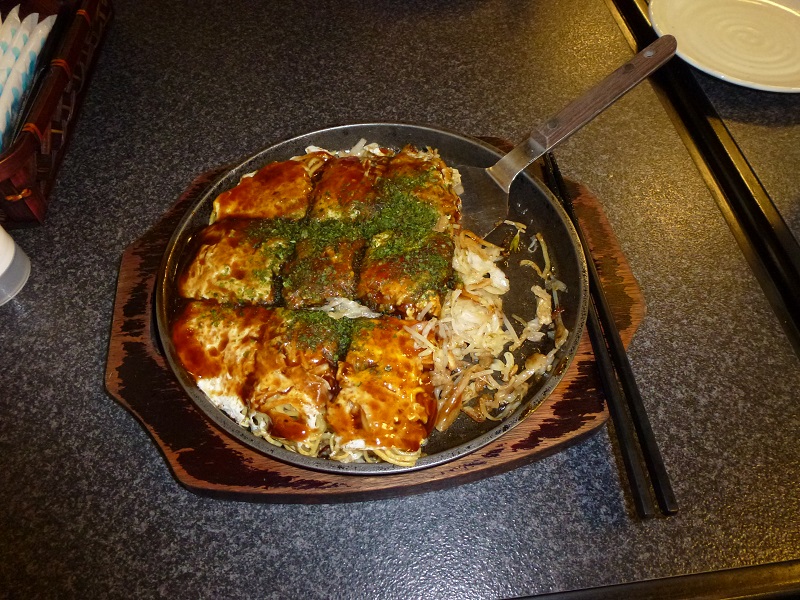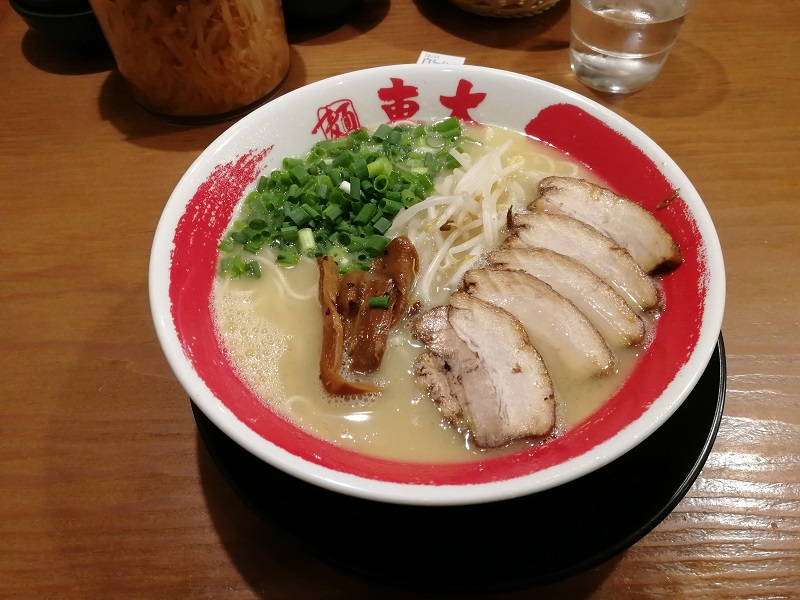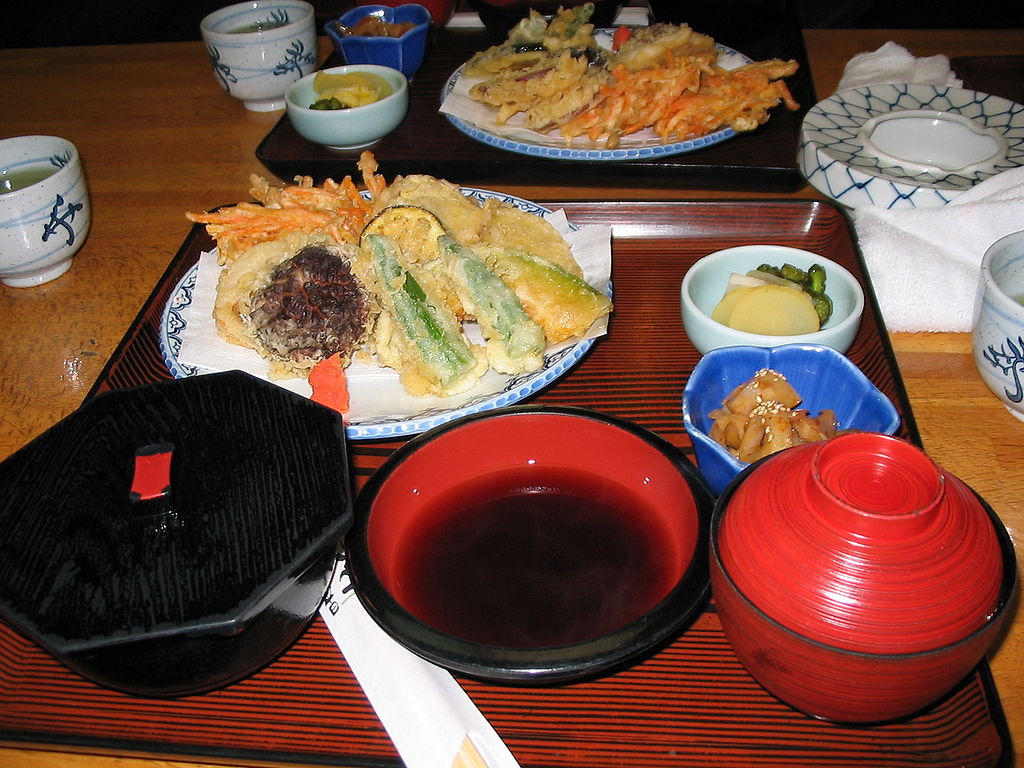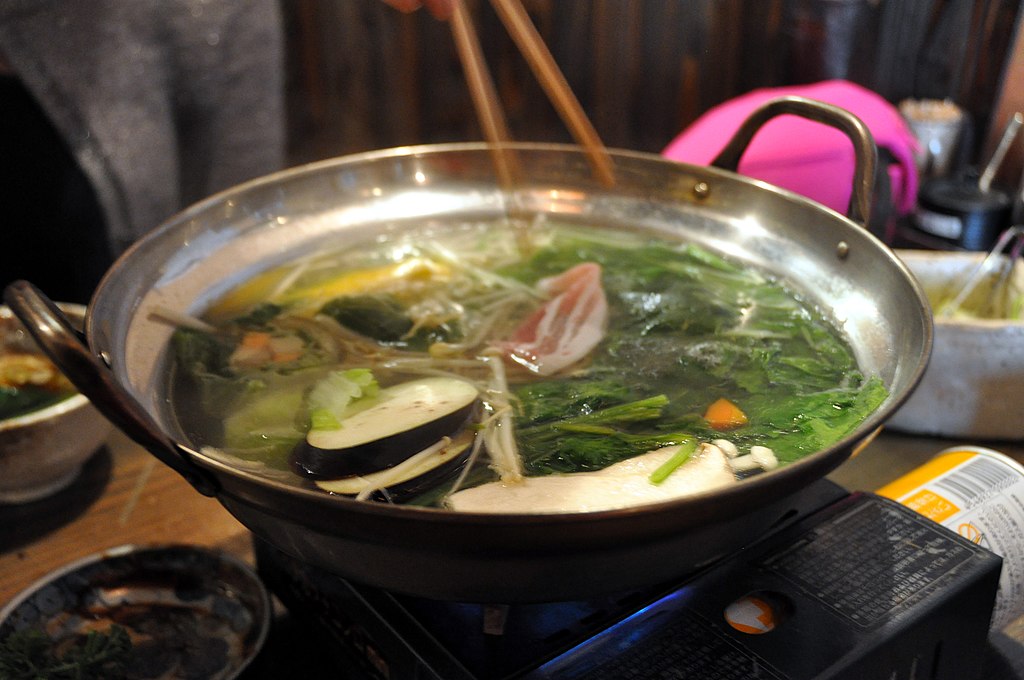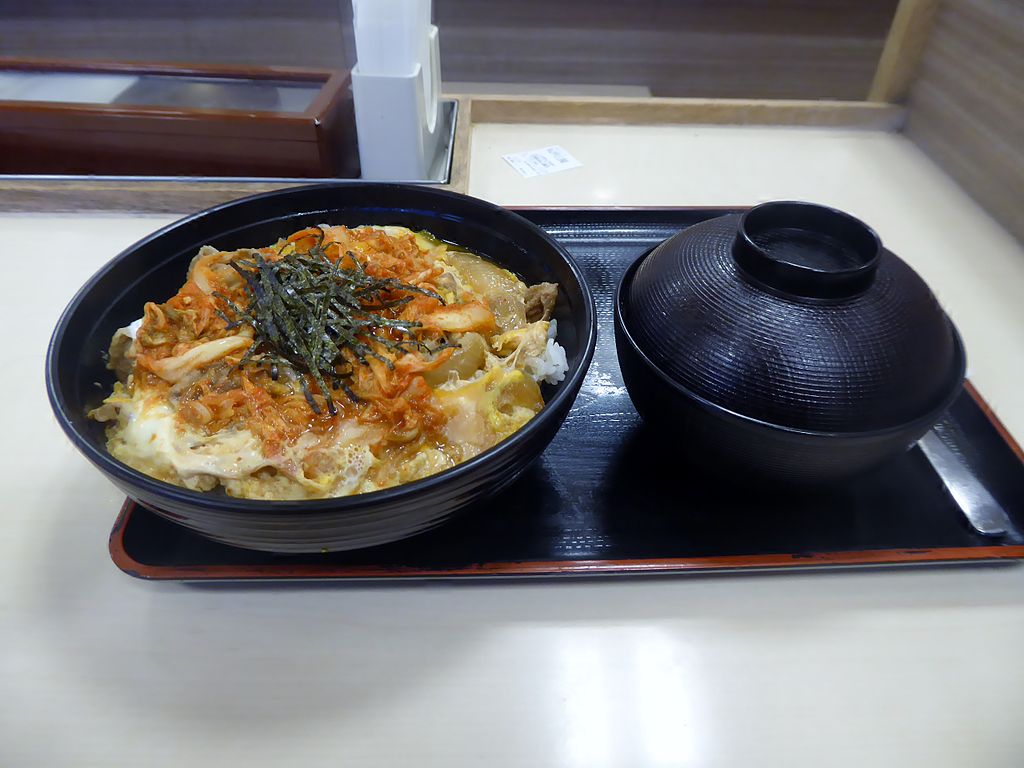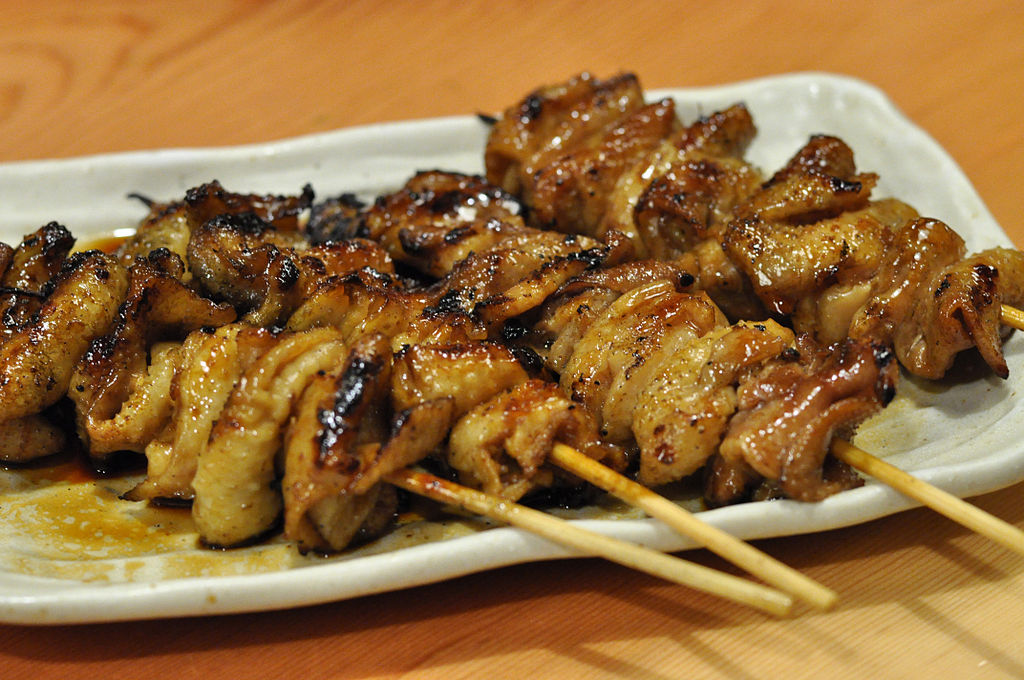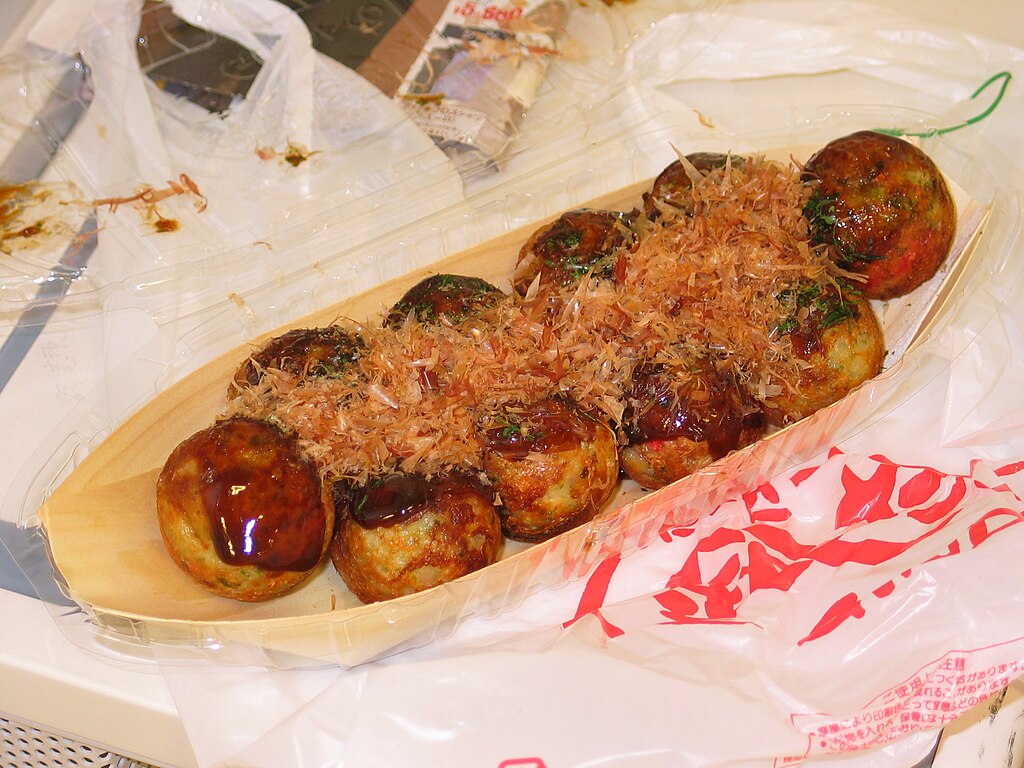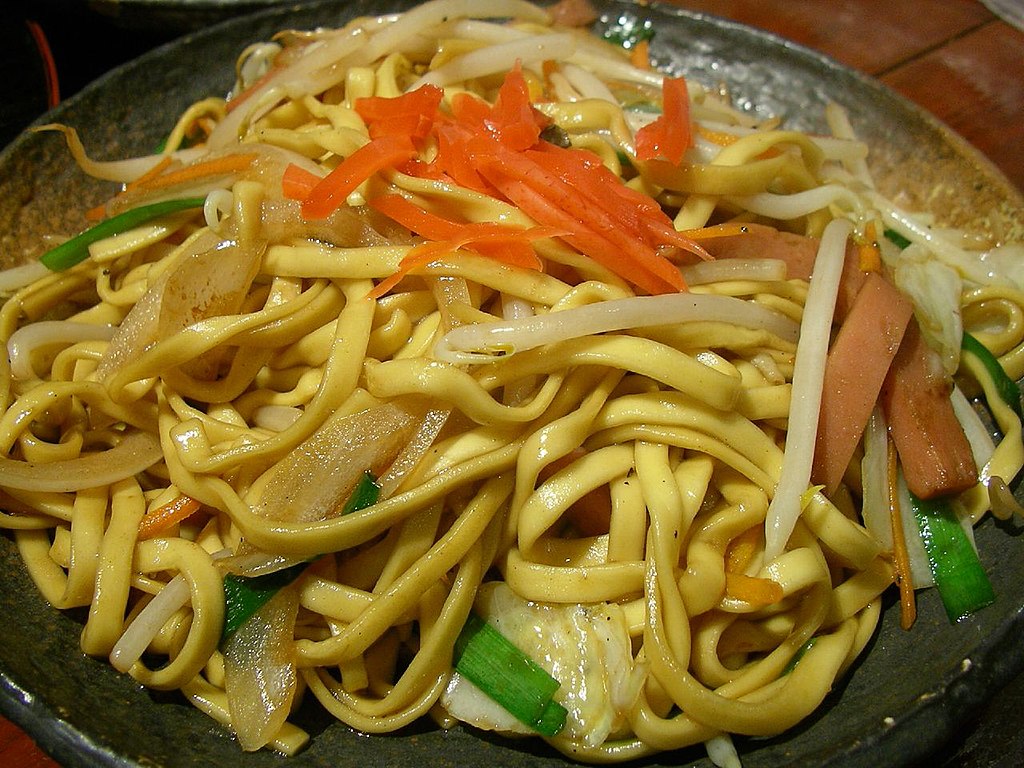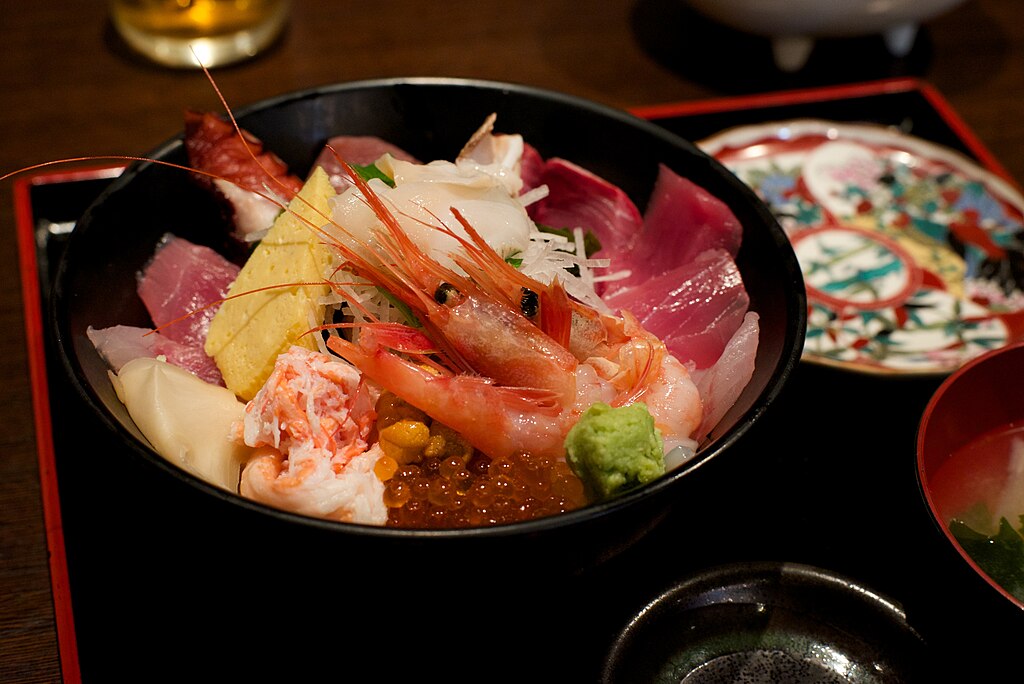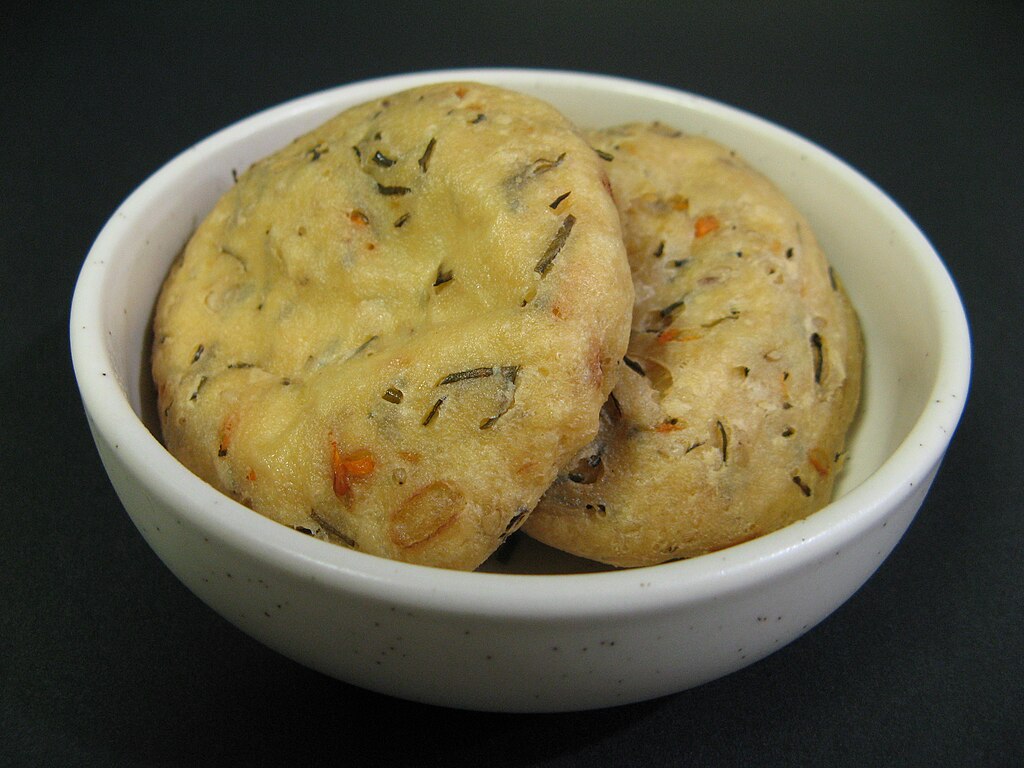Japanese cuisine
Many associate Japanese cuisine with sushi and sashimi, believing that the Japanese eat raw fish every day. Nothing could be more wrong. It is true that fish is the main ingredient, but there are plenty of other ingredients. One can find noodles such as udon (thick noodles made of wheat flour) and soba (fine buckwheat noodles). Other ingredients are rice, soy sauce, tofu, wasabi, meat and vegetables.
Photo by Japanforeveryone.com
Sushi and sashimi
There are various types of sushi, the common ingredient however being rice. The most famous are Nigiri, rice balls usually prepared with a slice of fish or shellfish on top, and Maki-sushi, rice with a small piece of fish or vegetable inside rolled up in a sheet of seaweed called ‘Nori’. There are also many other types of sushi such as Gunkan.
Sashimi, on the other hand, is just raw fish without the rice. The restaurants with a ribbon (Kaiten) where sushi plates run in front of customers are famous. You can also find excellent sushi, at good prices, at supermarkets.
Photo by Japanforeveryone.com
Okonomiyaki
This dish is consumed as much as pizza in Italy. Basically, it is an omelette where you can put anything in it. In fact, Okonomiyaki literally means ‘whatever you want (okonomi) on the griddle/non-stick pan (yaki)’.
You can find restaurants where it is the customer himself who prepares on his own table, equipped with a griddle, the Okonomiyaki he prefers. Both Hiroshima-style and Kansai-style Okonomiyaki are famous, for which there are hundreds of dedicated restaurants.
Photo by Japanforeveryone.com
Ramen
Ramen is a typical Japanese dish, but of Chinese origin, made of wheat noodles served in meat and/or fish broth, often flavoured with soy sauce or miso and with toppings such as sliced pork, dried seaweed, Naruto, green onions and sometimes corn. Each locality in Japan has its own variation of ramen.
Originally, the name ‘ramen’ was called ‘Nankin -soba’ to differentiate between Chinese and Japanese soba, and in time it changed to ‘Shina- soba’ (both names mean ‘China’). Later, however, they started calling it ‘Chūka-soba’.
Then, in 1958, the first Japanese-style instant ramen, ‘Nissin Chicken Ramen’, was born in Japan, and since then it has become popular to call it ‘Ramen’, becoming a Japanese cultural icon studied all over the world.
Photo by Japanforeveryone.com
Tempura
Tempura is basically frying. The ingredients, usually prawns and vegetables (such as courgettes and pumpkin), are dipped in a batter and then fried. This dish has Portuguese origins.
PatriceNeff, CC BY 1.0, via Wikimedia Commons
Sukiyaki
Sukiyaki consists of slices of beef, tōfu, ito konnyaku, leek, Peking cabbage, shiitake (Japanese mushrooms), and other vegetables cooked in an iron pot with soy sauce, sugar, water and mirin.
The dishes are then served in a bowl with beaten egg.
cyclonebill from Copenhagen, Denmark, CC BY-SA 2.0, via Wikimedia Commons
Shabu shabu
Shabu-shabu is a variant similar to Sukiyaki. The ingredients are almost the same except for the type of meat: instead of beef, slices of pork are put in. The preparation method also changes: instead of cooking it in a pot, all the ingredients are put into the broth, prepared using ‘Katsuobushi’, dried tuna flakes, or ‘Kombu’, a type of seaweed, together with water.
After a few seconds in the broth, the slices of meat are dipped into the sauce, Ponzu, and then eaten.
cyclonebill from Copenhagen, Denmark, CC BY-SA 2.0, via Wikimedia Commons
Yakiniku
Yakiniku is a method of cooking meat and vegetables. It consists of a fire with a grill on top.
Usually in restaurants, customers cook their own ingredients.
mypicture, CC BY-SA 3.0, via Wikimedia Commons
Donburi
This dish consists of a rice base with fish, vegetables or meat on top. One type of donburi is katsudon, with rice and tonkatsu (pork cutlet).
Tokumeigakarinoaoshima, CC BY-SA 4.0, via Wikimedia Commons
Yakitori
Yakitori are chicken skewers (all parts). There are also other variations.
Ocdp, CC0, via Wikimedia Commons
Tonkatsu
Tonkatsu is the Japanese version of our Milanese schnitzel. It is usually served with shredded cabbage, miso soup and rice.
The variant with tonkatsu over a bowl of rice is called Katsudon.
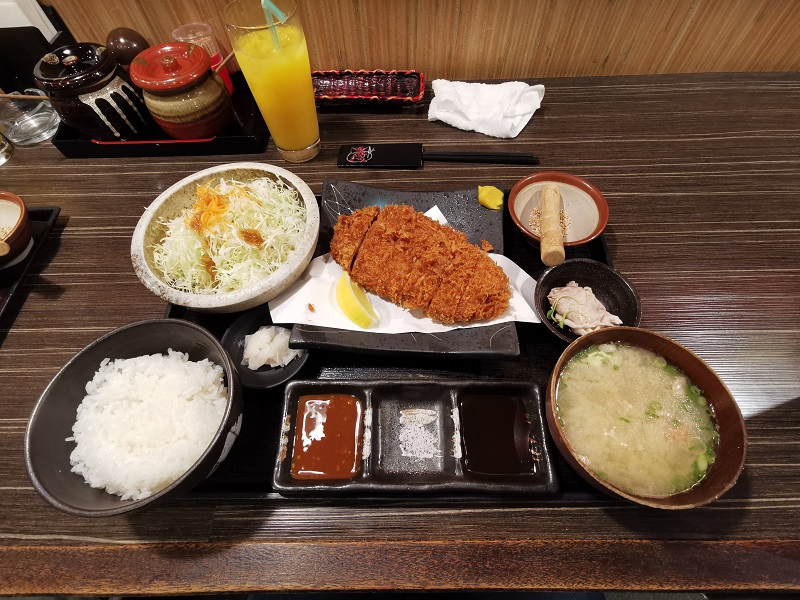
Photo by Japanforeveryone.com
Takoyaki
Takoyaki are spherical fried meatballs typical of Ōsaka cuisine. When ready, they are garnished with takoyaki sauce, called ‘Otafuku’, or the equivalent shredded seaweed, called ‘Aonori, mayonnaise and dried tuna flakes, called ‘Katsuobushi’.
Apart from the typical recipe, there are other variations, especially regarding the final garnish.
The main ingredient is octopus, but tempura (tenkasu) scraps, red ginger and/or green onion can be added before cooking.
Keith Pomakis, CC BY-SA 2.5, via Wikimedia Commons
Yakisoba
Yakisoba are Chinese noodles flavoured with ingredients such as vegetables, meat, fish and sauces stir-fried on the griddle or in the wok.
jetalone from Shintomi, Tokyo, CC BY 2.0, via Wikimedia Commons
Gyōza
Gyōza are noodle dumplings with minced meat, fish (usually prawns) and vegetables inside. They can be steamed or pan-fried. They are usually accompanied by soy sauce and rice vinegar in which to dip them.
Adryan R. Villanueva, CC BY-SA 4.0, via Wikimedia Commons
Nikuman
Nikuman (Baozi in the Chinese version) is a typical Japanese snack, found widely in street food stalls on the streets of Japan and in convenience stores throughout the territory. It is obtained by kneading water flour and other ingredients to obtain a bag of steamed bread, stuffed with pork and flavoured in different variants, including curry and in the international versions also pizza. It can also be found in Italy in grocery shops specialising in Chinese and Japanese products.
Kentin, CC BY-SA 4.0, via Wikimedia Commons
Japanese curry
Japanese curry is very popular as a dish. It is served in three variations: with rice, Udon or Karē-pan ( curry-pan or curry bread) which is a kind of fried bun.
Vegetables such as carrots, onions and potatoes and meat such as pork, beef and chicken are usually used to make curry. There is also a variant with the addition of pork cutlet (tonkatsu) called katsu-kare.
Hyougushi from Kyoto, CC BY-SA 2.0, via Wikimedia Commons
Miso soup
Miso-shiru (or miso soup) is a traditional soup of Japanese cuisine consisting basically of broth prepared with Dashi and miso paste.
Miso-shiru takes its name from its main ingredient, miso, a fermented soybean paste that has many uses in cooking, especially in modern Japanese cuisine, where it is often used for marinating or gratinating.
At its base is dashi. Miso paste is dissolved in this broth to make soup, to which cubes of tofu and other varieties of seaweed can be added.
cyclonebill from Copenhagen, Denmark, CC BY-SA 2.0, via Wikimedia Commons
Oden
Oden is a typical winter dish. It consists of a soup made with dried tuna or kombu seaweed broth, in which various ingredients are cooked: typically daikon, egg, konnyaku, ganmodoki and more.
TOMOYOSHI from Tokyo, CC BY 2.0, via Wikimedia Commons
Wonton soup
Wonton soup is a soup of oriental origin consisting of broth and stuffed dumplings. The ingredients and preparation might be reminiscent of the Italian cappelletti in broth, but in reality, there are several differences.
First of all, in the preparation of wontons, other ingredients are used, typical of oriental cuisine that make the dish very different from the flavours we are used to; these ingredients are mirin (sake – sweet Japanese rice wine), wakame seaweed (very common in Japanese cuisine, rich in calcium, vitamins B and C, magnesium and iron), soya or ginger, which is becoming very popular in western kitchens too. This soup is light, flavoursome and very tasty, great for warming you up on cold winter days; wonton soup is a healthy dish that brings a touch of originality and imagination to your table. All ingredients can be found in ethnic shops specialising in oriental cuisine.
BrokenSphere, CC BY 3.0, via Wikimedia Commons
Kaisen-don
Kaisen-don is a fresh seafood dish served over hot white rice. Unlike Chirashi Sushi, which is very similar in appearance, Kaisen-don is not served with sushi rice vinegar.
Jun Seita from Palo Alto, CA, U.S., CC BY 2.0, via Wikimedia Commons
Ganmodoki
Ganmodoki (in kanji: 雁擬き; in hiragana: がんもどき), is a typical Japanese dish, a fried tofu made from vegetables, eggs and white sesame seeds. It is also eaten in broth and often in an oden.
As is often the case with Japanese cuisine, the name changes depending on location; in the Kansai region, the same dish is called hiryouzu.
Pieria(Uploader and Photographer), Public domain, via Wikimedia Commons
Natto
Natto is a typical Japanese food, is healthy, very good for the health and is very famous for its unpleasant smell and taste. It is basically fermented soya beans. It is very stringy, in fact it is very difficult to eat. It is usually seasoned with soy sauce, mustard and chives and is often eaten with steamed rice.
Onigiri
Onigiri is a snack consisting of a rice ball with salmon, tuna, umeboshi or other ingredients inside. It is usually triangular in shape and is wrapped on one side with nori seaweed for easy gripping.
Taiyaki
Taiyaki (‘鯛焼き’) literally means ‘grilled sea bream’, but it is actually a delicious dessert that takes the shape of a sea bream.
The dough is very similar to the American pancake or waffle and is usually filled with sweet bean jam, called ‘Azuki’, although lately other fillings such as chocolate, custard or other flavours can be found.
It originated in Japan in 1909 and was eaten mainly at matsuri but today can be found in any shop, conbini and supermarket.
In 1975-76 it was also the subject of a famous song called ‘Oyoge! Taiyaki-kun!” (swim taiyakikun!) written for a children’s TV programme and which sold many copies at the time.
田村 義邦, CC BY-SA 4.0, via Wikimedia Commons
Mochi
Mochi is a Japanese food made of glutinous rice turned into a soft, sticky paste usually eaten with azuki jam.
In Japanese tradition, there are various types of mochi that are eaten on different holidays, such as ‘Ozōni’, a savoury dish eaten especially on New Year’s Eve.
There are various types of mochi such as Kashiwa-mochi (pictured), Sakura mochi, Kusa mochi, Warabi mochi and many others.
katorisi, CC BY-SA 3.0, via Wikimedia Commons
Kasutera
‘Castella’ or ‘Kasutera’ is the famous and simple cake made with eggs, sugar, flour and mizuame (starch syrup). Its name derives from the Portuguese ‘Pão de Castella’, meaning ‘Castile cake’. Being a cake that could be kept for a long time, it was appreciated by those who went to sea for months at a time.
In the Edo period it was very expensive due to the cost of sugar.
This cake would be a relative of our ‘sponge cake’. Castile is a Spanish region, so ‘sponge cake’ and other variants are almost synonymous with ‘Pão de Castella’. Nowadays, new ingredients such as green tea powder and honey are added and it is a Nagasaki speciality.
663highland, CC BY-SA 3.0, via Wikimedia Commons
Konpeitō
Konpeitō’ are Japanese coloured candies. Their name is derived from ‘confeito’, which means candy. Sugar refining did not yet exist in Japan, so it was the missionaries who brought these sweets.
The ‘konpeito’ are 5-10 cm candies and its bizarre shape depends on its baking process.
Today in Japan, they are prepared by hand, in a long process of 7-10 days. The sugared water is left to drip in a rotating vat, called a ‘dora’.
Midori, CC BY-SA 3.0, via Wikimedia Commons

